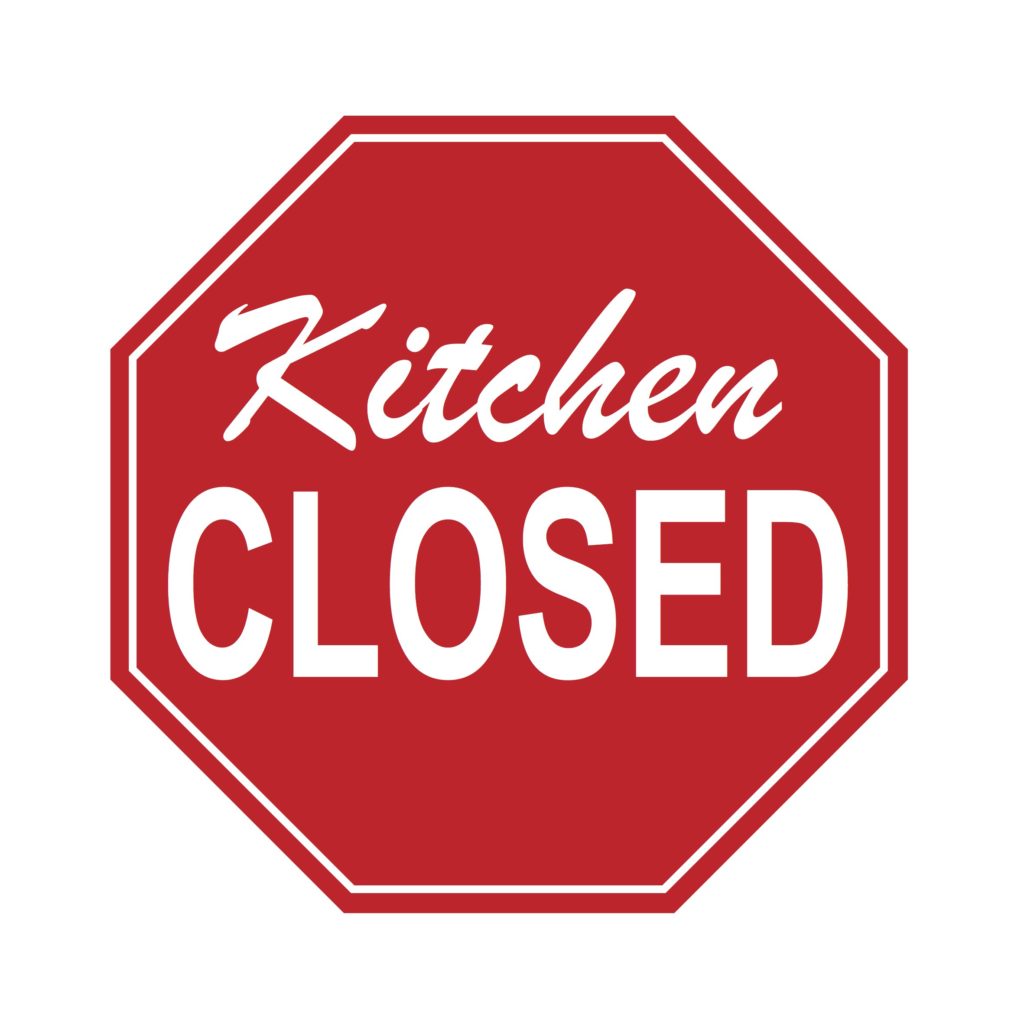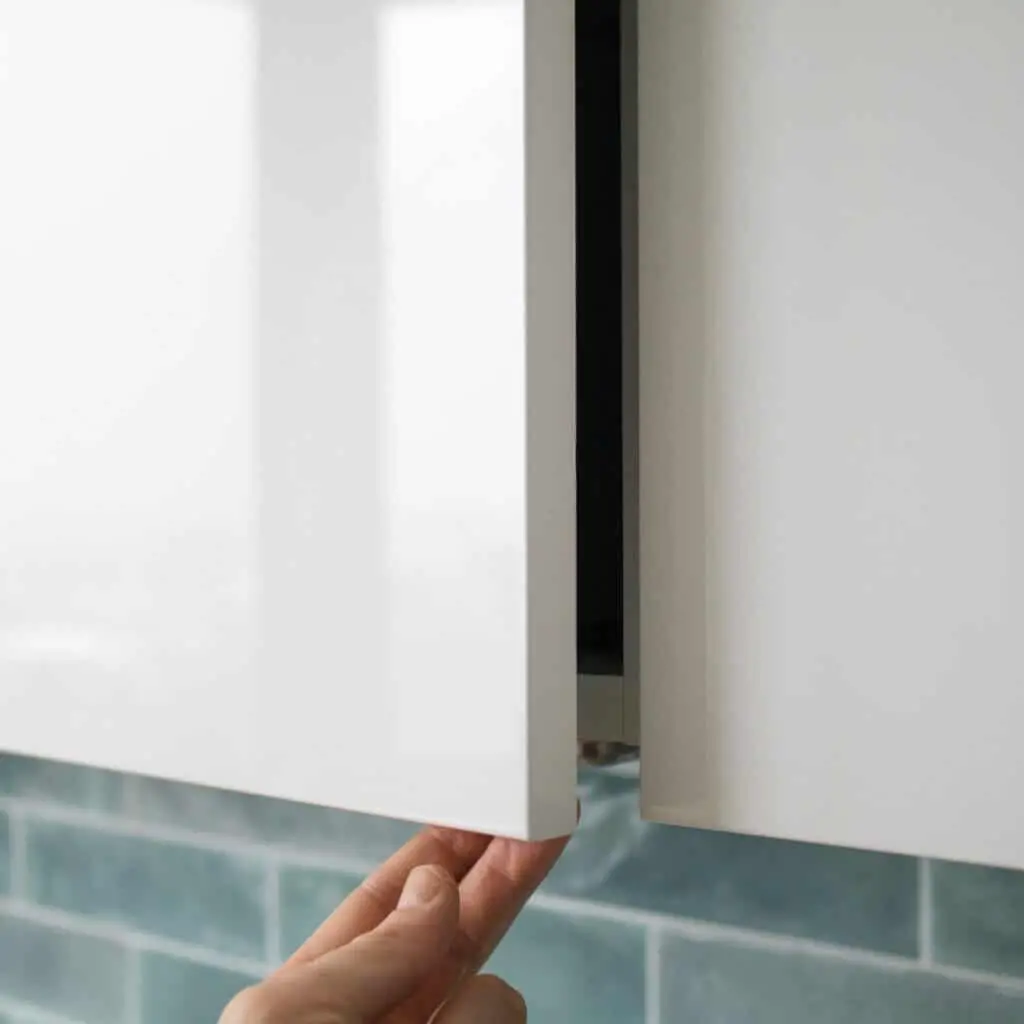Common Causes of Kitchen Cabinet Doors Not Closing Properly
It can be incredibly frustrating when your kitchen cabinet doors refuse to cooperate and stay shut. This seemingly minor issue can quickly escalate into a major annoyance, making your kitchen feel disorganized and impacting your daily routine. Understanding the common culprits behind this problem is the first step to fixing it. Let’s delve into the most frequent reasons why your cabinet doors might be acting up.
Loose Hinges
Loose hinges are a common cause of cabinet doors not closing properly. The screws that hold the hinges to the cabinet door and frame can loosen over time due to regular use and the weight of the door. This looseness can cause the door to sag or become misaligned, preventing it from closing completely.
Symptoms of Loose Hinges
- The door may sag or hang unevenly.
- The door may not close flush with the cabinet frame.
- You may hear a rattling sound when you open or close the door.
Worn-Out Hinges
Just like any other mechanical part, hinges can wear out over time. Constant use can cause the metal parts of the hinge to become worn or damaged, making it difficult for the door to swing smoothly and close properly.
Symptoms of Worn-Out Hinges
- The door may stick or bind when opening or closing.
- You may hear a grinding or scraping sound when you open or close the door.
- The door may not close all the way, even if the hinges are tightened.
Misaligned Doors, Kitchen cabinet door won t stay closed
Even if the hinges are in good condition, the cabinet door itself might be misaligned. This can occur due to various reasons, including improper installation, settling of the cabinet frame, or impact from a heavy object. A misaligned door won’t fit properly within the cabinet frame, preventing it from closing.
Symptoms of Misaligned Doors
- The door may rub against the cabinet frame when you open or close it.
- The door may not close flush with the cabinet frame.
- The door may be difficult to open or close.
Obstructions in the Cabinet
Sometimes, the problem isn’t with the door or the hinges but with the cabinet itself. Objects placed inside the cabinet, such as bulky items or improperly stored items, can obstruct the door’s path, preventing it from closing.
Symptoms of Obstructions in the Cabinet
- The door may hit an object inside the cabinet when you try to close it.
- The door may not close all the way.
- You may hear a banging sound when you try to close the door.
Damaged Cabinet Frame
The cabinet frame itself can be damaged, affecting the door’s ability to close properly. This damage can result from impact, moisture, or improper installation. A warped or cracked frame can create an uneven surface for the door to close against.
Symptoms of a Damaged Cabinet Frame
- The door may not close flush with the cabinet frame.
- The door may rub against the cabinet frame when you open or close it.
- You may see visible cracks or warping in the cabinet frame.
Troubleshooting and Repairing Cabinet Doors

Now that you’ve identified the culprit behind your cabinet door woes, it’s time to roll up your sleeves and get to work! Armed with the right tools and a bit of know-how, you can tackle these pesky problems and restore your kitchen cabinets to their former glory.
Checking and Tightening Loose Hinges
Loose hinges are a common culprit for doors that won’t close properly. They can cause the door to sag, rub against the frame, or even come completely detached. Here’s how to check and tighten loose hinges:
- Gather your tools: You’ll need a screwdriver that matches the screw heads on your hinges.
- Inspect the hinges: Look for any screws that are loose or missing.
- Tighten the screws: If the screws are loose, carefully tighten them using your screwdriver. Be careful not to overtighten, as this could damage the hinge or the cabinet frame.
- Replace missing screws: If any screws are missing, replace them with new screws of the same size and type.
Replacing Worn-Out Hinges
Over time, hinges can wear out and become damaged, leading to problems with your cabinet doors. If your hinges are showing signs of wear and tear, such as rust, cracks, or loose screws, it’s time to replace them. Here’s how:
- Choose new hinges: Select hinges that are compatible with your existing cabinet doors and frames. You can find a wide variety of hinges at home improvement stores.
- Remove the old hinges: Use a screwdriver to remove the screws holding the old hinges in place.
- Install the new hinges: Align the new hinges with the existing screw holes in the door and frame. Secure the hinges with the screws provided.
Realigning Misaligned Doors
Cabinet doors can become misaligned over time, leading to gaps or uneven closures. Here’s how to realign misaligned doors:
- Identify the problem: Determine whether the door is sagging, rubbing against the frame, or simply out of alignment.
- Adjust the hinges: Use a screwdriver to adjust the screws on the hinges to raise, lower, or shift the door into the correct position.
- Check for interference: Ensure that nothing is obstructing the door’s movement, such as a drawer or another cabinet door.
Removing Obstructions from the Cabinet
Sometimes, a simple obstruction can prevent a cabinet door from closing properly. Here’s how to remove obstructions:
- Check for items blocking the door: Look inside the cabinet for any items that might be blocking the door’s path, such as dishes, utensils, or other kitchen supplies.
- Remove any obstructions: Carefully remove any items that are blocking the door.
Repairing Damaged Cabinet Frames
If the cabinet frame itself is damaged, it can prevent the door from closing properly. Here’s how to repair a damaged cabinet frame:
- Assess the damage: Determine the extent of the damage to the cabinet frame.
- Repair minor damage: For minor cracks or scratches, you can use wood filler or epoxy to repair the damage.
- Replace severely damaged sections: If the damage is severe, you may need to replace the entire cabinet frame or section of the frame.
Preventive Maintenance for Kitchen Cabinets: Kitchen Cabinet Door Won T Stay Closed

Just like any other part of your home, kitchen cabinets require regular maintenance to ensure they stay in good working order and last for years to come. Neglecting maintenance can lead to problems like sticking doors, loose hinges, and even structural damage, ultimately costing you more in repairs down the line.
Inspecting Hinges for Wear and Tear
Regularly inspecting the hinges is crucial for identifying any signs of wear and tear. Hinges are the workhorses of your cabinet doors, bearing the weight of the doors and facilitating their smooth opening and closing. Over time, they can become worn, causing doors to sag, stick, or even fall off.
- Look for signs of wear: Examine the hinge pins, the hinge plates, and the screws for any signs of wear, such as scratches, dents, or rust.
- Check for looseness: Gently shake the doors to see if they feel loose or wobbly. This could indicate that the hinges are loosening or that the screws are coming loose.
- Replace worn hinges: If you notice any significant wear or tear, it’s best to replace the hinges with new ones. This will ensure that the doors continue to operate smoothly and prevent further damage.
Cleaning and Lubricating Hinges
Accumulation of dust, grease, and other debris can hinder the smooth operation of hinges, causing them to squeak, stick, or even break. Regular cleaning and lubrication can help prevent these issues.
- Remove the doors: For easier access, it’s recommended to remove the doors from the cabinets. This allows for thorough cleaning and lubrication.
- Clean the hinges: Use a soft cloth and a mild cleaner to wipe down the hinges, removing any dirt or grime. Avoid using harsh chemicals or abrasive cleaners, as these can damage the hinges.
- Lubricate the hinges: After cleaning, apply a light coat of lubricant to the hinge pins and plates. A silicone-based spray lubricant is a good choice, as it’s non-sticky and won’t attract dust.
- Reinstall the doors: Once the hinges are clean and lubricated, carefully reattach the doors to the cabinets.
Checking for Signs of Damage
While inspecting the hinges, it’s also essential to check for any signs of damage to the cabinet doors or frames.
- Look for cracks or chips: Examine the doors and frames for any cracks, chips, or other damage. These can be caused by impact, moisture, or simply wear and tear.
- Check for swelling or warping: If you live in a humid climate, check for any signs of swelling or warping in the doors or frames. This can be caused by exposure to moisture.
- Address any damage: If you find any damage, it’s important to address it promptly. Small cracks or chips can be repaired with wood filler or epoxy. More significant damage may require professional repair or replacement.
Ensuring Proper Alignment of Doors
Misaligned doors can lead to problems like sticking, uneven gaps, and even damage to the cabinet frames. Ensuring proper alignment is essential for smooth operation and aesthetic appeal.
- Adjust the hinges: Most hinges have adjustment screws that allow you to fine-tune the door’s alignment. You can use a screwdriver to adjust the screws until the doors are level and flush with the cabinet frames.
- Check for loose screws: Ensure that all screws are securely fastened. Loose screws can cause the doors to become misaligned.
- Realign the doors: If the doors are significantly misaligned, you may need to remove them from the cabinets and realign them before reinstalling them.
Avoiding Overloading Cabinets
Overloading cabinets can put stress on the hinges, doors, and even the cabinet frames, leading to premature wear and tear.
- Distribute weight evenly: Avoid placing heavy items in the upper cabinets, as this can put undue stress on the hinges and doors. Distribute weight evenly across the shelves to minimize stress.
- Use shelf dividers: Use shelf dividers to help support heavy items and prevent them from tipping over.
- Consider alternative storage: If you have a lot of heavy items, consider using alternative storage solutions, such as pantry shelves or drawers, to avoid overloading the cabinets.
Kitchen cabinet door won t stay closed – So, you’re telling me your kitchen cabinet door is acting like a rebellious teenager, refusing to stay closed? Maybe it’s time to consider a whole new approach to storage. You could get inspired by the sleek and space-saving solutions offered by laundry room cabinets wall mounted.
Who knows, maybe that’ll give you some fresh ideas on how to tame your unruly kitchen cabinet door.
My kitchen cabinet door is acting up again, won’t stay closed. It’s like it’s got a mind of its own! Maybe I should get a cabinet door drying rack to hold all the stuff that keeps falling out.
At least then, I won’t have to worry about the door slamming shut and making a racket. It’s the little things, you know?

